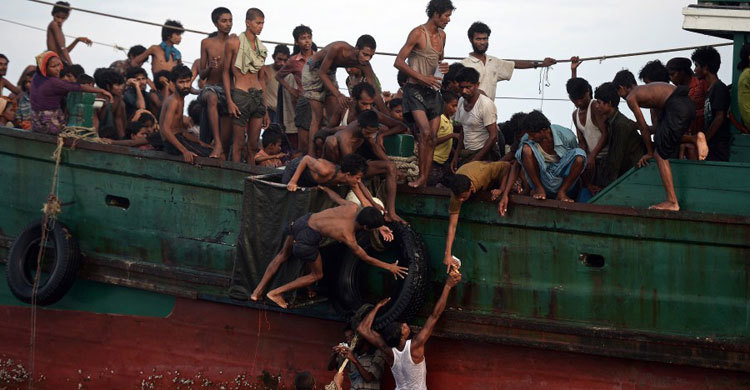Who are the Rohingya?

The Rohingya are often said to be the world’s most persecuted minority. They are an ethnic Muslim group in the majority Buddhist country and make up around one million of the total 50 million populations.
They hail from the country’s northwest and speak a Bengali dialect. Almost all live in Rakhine, one of the poorest states, with a population of three million.
About 140,000 Rohingya in the Rakhine state live in ghetto-like camps that they can’t leave without government permission.
They are not regarded as one of the country’s 135 official ethnic groups and are denied citizenship under Myanmar’s 1982 Citizenship Law, which effectively renders them stateless.
To get citizenship, they need to prove they have lived in Myanmar for 60 years, but paperwork is often unavailable or denied to them. As a result, their rights to study, work, travel, marry, practise their religion and access health services are restricted.
They cannot vote and even if they jump through the citizenship test hoops, they have to identify as ‘naturalised’ as opposed to Rohingya, and limits are placed on them entering certain professions like medicine, law or running for office.
According to Rohingyas and some scholars, they are indigenous to Rakhine State, while other historians claim that they migrated to Myanmar from Bengal primarily during the period of British rule in Burma, and to a lesser extent, following Burmese independence in 1948 and the Bangladesh Liberation War in 1971. International media and human rights organizations have often described Rohingyas as one of the most persecuted minorities in the world, while origin of that term with relation to the United Nations is still unclear.
Muslims have settled in Rakhine State (also known as Arakan) since the 16th century, although the number of Muslim settlers before British rule is unclear. After the first Anglo-Burmese War in 1826, the British annexed Arakan and encouraged migrations from Bengal to work as farm laborers. The Muslim population may have constituted 5% of Arakan’s population by 1869, although estimates for earlier years give higher numbers. Successive British censuses of 1872 and 1911 recorded an increase in Muslim population from 58,255 to 178,647 in Akyab District.
During World War II, the Arakan massacres in 1942 involved communal violence between British-armed V Force Rohingya recruits and Buddhist Rakhine people and the region became increasingly ethnically polarized.
In 1982, General Ne Win’s government enacted the Burmese nationality law, which denied Rohingya citizenship. Since the 1990s, the term ‘Rohingya’ has increased in usage among Rohingya communities.
As of 2013, about 1.3 million Rohingyas live in Myanmar. They reside mainly in the northern Rakhine townships, where they form 80-98% of the population. Many Rohingyas have fled to ghettos and refugee camps in neighbouring Bangladesh and to areas along the border with Thailand.
More than 100,000 Rohingyas in Myanmar continue to live in camps for internally displaced persons, not allowed by authorities to leave. Rohingyas have received international attention in the wake of 2012 Rakhine State riots, and more recently because of their attempted migration throughout Southeast Asia in the 2015 Rohingya refugee crisis.
According to United Nations, this year more than 10,000 Rohingya Muslims from Myanmar have crossed the border into Bangladesh to flee violence.
Source: Wikipedia, Aljazeera
